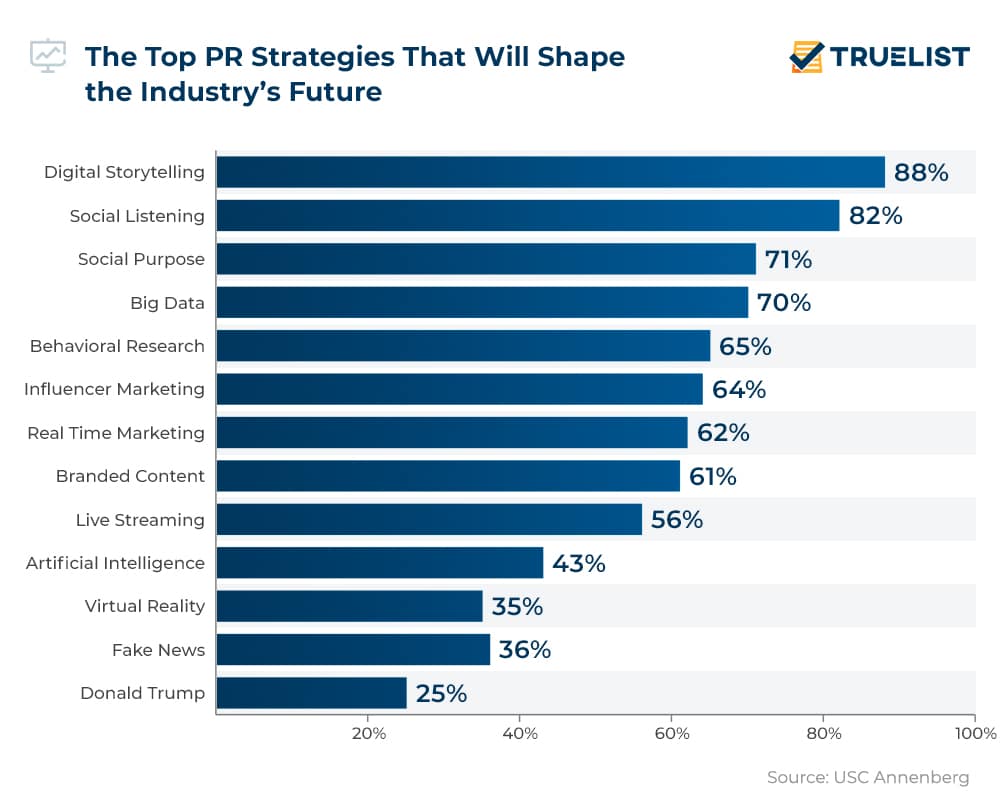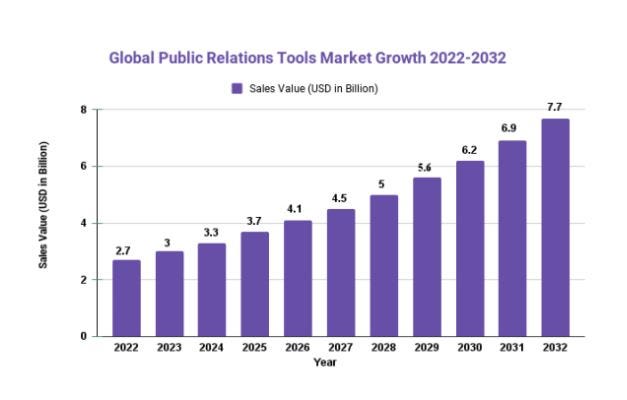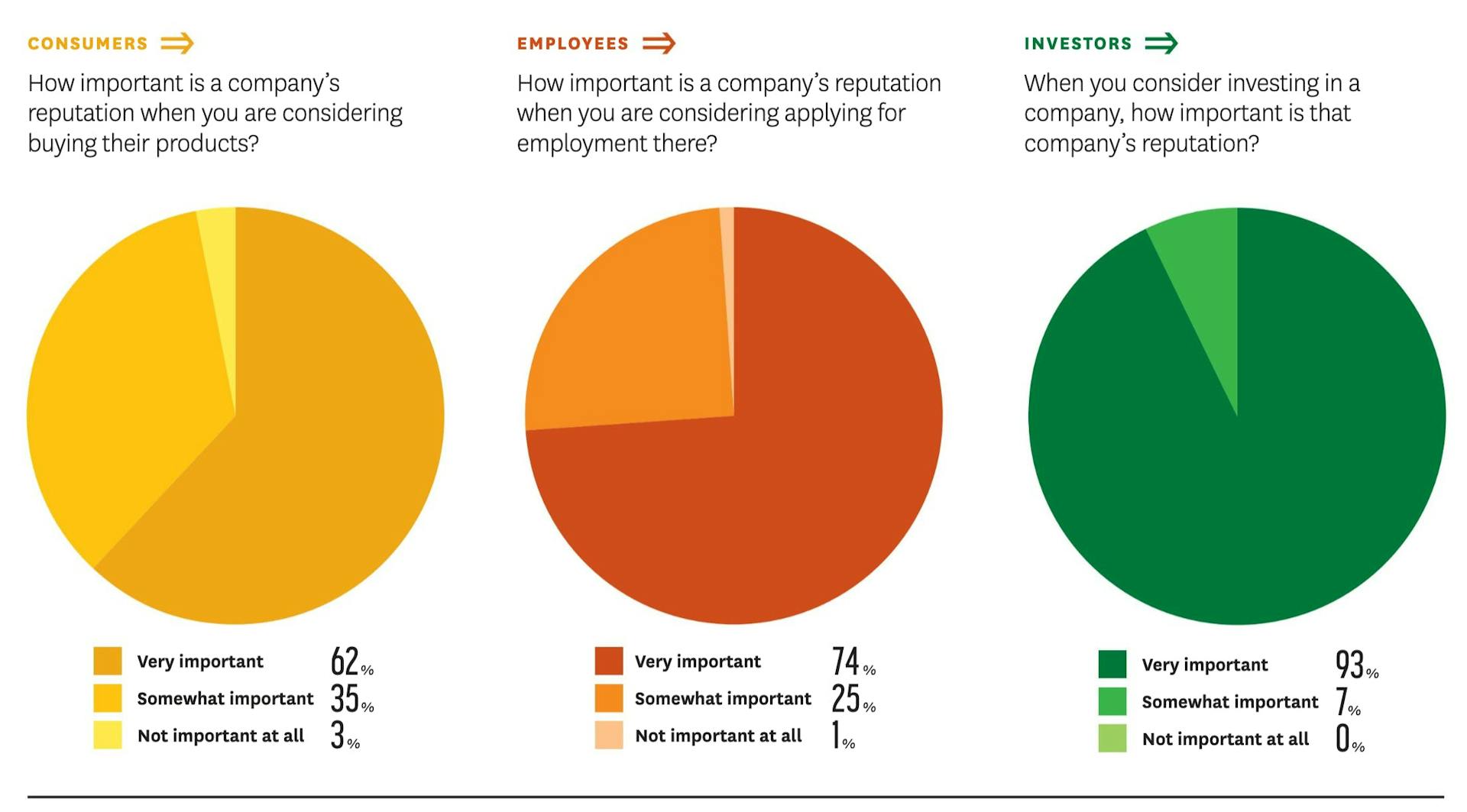In today’s business landscape, the dynamics between public relations (PR) and marketing are vital for brand success and company name. Understanding the distinctions and synergies between public relations vs. marketing is essential for crafting effective communication strategies that resonate with stakeholders and drive business objectives.
Setting the Stage: The Intertwined Realms of Public Relations and Marketing
The symbiotic relationship between public relations and marketing underscores the interconnectedness of these disciplines in shaping brand perception and fostering consumer engagement.
As we delve into the historical evolution of public relations and marketing, it becomes evident that their roles have evolved to encompass a broader array of strategies and tactics to meet the demands of an ever-changing marketplace.
The significance of delineating the difference between public relations and marketing lies in recognizing their unique contributions and aligning them synergistically to achieve overarching business goals.
Understanding Public Relations
Defining Public Relations: Concept and Scope
Public relations embodies the art and science of cultivating relationships, managing reputation, and fostering goodwill among various stakeholders through strategic communication efforts.
Within the realm of marketing and pr part of public relations, media relations play a pivotal role in disseminating key messages and shaping public perception through press releases, media interviews, and other forms of earned media coverage.
A robust communication strategy lies at the heart of effective public relations, encompassing tactics such as community engagement, crisis communication, and reputation management to maintain a positive public image.
Objectives of Public Relations
At its core, public relations focuses an organization on building and maintaining positive relationships with stakeholders, whether they be customers, employees, investors, or the general public.
Reputation management is a cornerstone of public relations, as it involves proactively shaping public perception and responding to crises to safeguard an organization’s credibility and trustworthiness.
Market research serves as a foundation for effective public relations strategies, providing insights into stakeholder perceptions, preferences, and concerns to inform communication efforts.
Tools and Tactics in Public Relations
Social media marketing has become an indispensable tool in the public relations arsenal, allowing organizations to engage directly with audiences, amplify messaging, and monitor conversations to shape brand perception.
Influencer marketing has emerged as a powerful strategy within public relations, leveraging the credibility and reach of influencers to endorse products, those selling products or services themselves, or causes and foster authentic connections with target audiences.
Email marketing remains a staple tactic in the public relations toolkit, offering a direct and personalized channel for communicating with stakeholders and disseminating relevant content.
Measurement and Evaluation in Public Relations
Measuring the effectiveness of public relations efforts requires a nuanced approach, encompassing both qualitative and quantitative metrics to gauge impact and demonstrate ROI.
Key performance indicators (KPIs) in public relations may include media impressions, sentiment analysis, stakeholder engagement metrics, and share of voice compared to competitors.
To accurately measure performance and assess the success of public relations initiatives, organizations must establish clear objectives, track relevant metrics, and adapt strategies based on insights gleaned from data analysis.
Future of Public relations

88% of PR experts affirm that digital storytelling represents the forthcoming trend. Amidst a plethora of conventional public relations methodologies, a significant majority of top PR practitioners advocate for embracing digital storytelling as a pivotal strategy. They emphasize that the pervasive influence of digitalization transcends various sectors, including the PR domain.

The worldwide PR industry is projected to exceed $133 billion by 2027. It saw a 6.6% rise from 2022 to 2023.
General Statistics on Public Relations

The USC Annenberg Global Communications Report highlights how vital reputation is across different groups: 62% of customers prioritize it when buying products, 74% of job seekers look at it when considering a role, and a massive 93%of investors weigh it heavily when deciding where to invest. These numbers emphasize just how essential reputation management is in today’s business world.
The need for PR experts is expected to go up by 6% by 2032, especially in the US. Worldwide, the demand is driven by the growing importance of having a good reputation and staying ahead of the competition.

Almost nine out of ten business executives agree: if companies don’t invest in social media marketing, they’ll fall behind. This means it’s crucial for businesses to use platforms like Facebook, Instagram, and Twitter to stay visible and competitive. Without a strong social media presence, they risk losing out on customers and opportunities for growth. So, investing in social media is a must-do for any company that wants to keep up and succeed in today’s market.

90% of business executives believe that creating interactive experiences for customers on social media is crucial for their company’s success. This shows that the majority of business leaders recognize the importance of engaging with customers online to thrive in today’s market.
Deciphering Marketing
Defining Marketing: Essence and Essence
Marketing focuses on identifying and satisfying customer needs through strategic planning, execution, and evaluation of activities aimed at promoting and selling products, or services and driving sales.
Unlike public relations, which emphasizes relationship-building and reputation management, the marketing team is primarily concerned with creating demand, generating leads, and ultimately converting prospects into customers.
Market research serves as the foundation of marketing strategy, providing valuable insights into consumer behavior, market trends, competitive dynamics, and opportunities for differentiation.
Objectives of Marketing
The primary goals of the marketing campaign revolve around increasing brand awareness, generating leads, driving sales, and fostering customer loyalty through targeted promotional efforts and strategic positioning.
Marketing campaigns are designed to achieve specific objectives, whether it be launching a new, product or service, entering a new market, or repositioning an existing offering to appeal to different segments or address evolving consumer needs.
Content marketing has emerged as a cornerstone of modern marketing strategies, focusing on creating and distributing valuable, relevant, and consistent content to attract and retain a clearly defined audience.
Tools and Tactics in Marketing
Digital marketing encompasses a diverse array of tactics, including search engine optimization (SEO), search engine marketing (SEM), social media marketing, email marketing, and content marketing, among others.
![Marketing Statistics Report 2022 [Free Download] - Venngage](https://venngage-wordpress.s3.amazonaws.com/uploads/2022/05/Marketing-Statistics-Visual-Content.png)
Traditional marketing channels such as television, radio, print, and outdoor advertising remain relevant in the marketing mix, particularly for reaching broad audiences and building brand awareness at scale.
Product launches represent pivotal moments in the marketing calendar, requiring careful planning, execution, and promotion to generate excitement, drive engagement, and maximize sales potential.
Measurement and Evaluation in Marketing
Measuring the success of marketing initiatives involves tracking key performance indicators (KPIs) such as website traffic, conversion rates, customer acquisition cost (CAC), return on investment (ROI), and customer lifetime value (CLV).
Analytics tools enable marketers to gather data, analyze trends, and derive actionable insights to optimize campaign performance, allocate resources effectively, and drive continuous improvement.
Performance metrics provide valuable feedback on the effectiveness of marketing efforts, guiding strategic decision-making and informing future campaigns to achieve desired outcomes.
Public Relations vs. Marketing: The Clash of Titans
Differentiating Between PR and Marketing
One of the key distinctions between public relations and marketing lies in their respective objectives and approaches to audience engagement.
While public relations focuses on a positive image, building relationships, managing reputation, and shaping public perception, marketing is geared towards creating demand, driving sales, and achieving specific business objectives.
Timelines and objectives also differ between public relations and marketing, with PR professionals often taking a longer-term view focused on reputation management and relationship-building, while marketing campaigns are more immediate and sales-driven.
Overlapping Territories: Where PR meets Marketing
Despite their distinct roles, public relations and marketing often intersect in integrated communication campaigns, where the strengths of both disciplines are leveraged to create cohesive messaging and amplify brand impact.
Brand storytelling serves as a bridge between public relations narratives increasing sales and marketing messages, weaving together themes of authenticity, credibility, and value proposition to resonate with target audiences and drive engagement.
Challenges of Integration
Integrating public relations and marketing efforts presents challenges in aligning objectives, strategies, and messaging to ensure consistency, coherence, and effectiveness across channels and touchpoints.
Balancing the long-term reputation-building goals different objectives of public relations with the short-term sales objectives of marketing requires collaboration, coordination, and compromise to achieve mutually beneficial outcomes.
Synergies and Collaborations
Leveraging the Power of Integration
By aligning public relations and marketing efforts, organizations can create holistic brand management strategies that amplify reach, engagement, and impact across multiple channels and platforms.
Integrated communication campaigns unify storytelling, messaging, and branding to create a seamless and compelling experience for audiences, reinforcing brand identity, values, and differentiation.
Amplifying reach and impact through cross-channel promotion enables organizations to maximize exposure, drive engagement, and foster meaningful connections with target audiences throughout the customer journey.
Case Studies: Successful Integration in Action
Numerous brands have successfully integrated public relations, advertising and marketing efforts to achieve synergy and drive business results across diverse industries and markets.
Case studies showcase best practices, lessons learned, and actionable insights from organizations that have effectively aligned their communication strategies to enhance brand perception, drive engagement, and achieve measurable outcomes.
Case Study 1: Coca-Cola’s “Share a Coke” Campaign
In 2014, Coca-Cola launched its iconic “Share a Coke” campaign in the United States, which exemplifies the integration of public relations and marketing to achieve remarkable success.
Public Relations vs. Marketing Integration: Coca-Cola’s campaign seamlessly blended elements of public relations and marketing by incorporating personalized labels with consumers’ names and encouraging them to share their Coke experiences on social media platforms.
Marketing Focuses on Consumer Engagement: The campaign’s primary focus was to foster consumer engagement and drive sales by creating personalized connections with the target audience.
Public Relations Tactics: Through strategic media relations and press releases, Coca-Cola generated buzz around the campaign’s launch, garnering widespread media coverage and earning valuable earned media placements.
Building Positive Brand Image: “Share a Coke” not only aimed to increase sales but also to enhance Coca-Cola’s positive public image by emphasizing the brand’s commitment to fostering meaningful connections and sharing moments of happiness.
Measuring Performance: Coca-Cola measured the success of the campaign by tracking sales figures, social media mentions, and consumer sentiment to evaluate its impact on brand perception and sales growth.
Result: The “Share a Coke” campaign proved to be a resounding success, driving a significant increase in sales, amplifying brand awareness, and strengthening Coca-Cola’s relationship with consumers. By integrating public relations and marketing efforts, Coca-Cola successfully achieved its objectives of building brand loyalty and driving sales growth.
Case Study 2: Nike’s “Dream Crazy” Campaign
Nike’s “Dream Crazy” campaign featuring Colin Kaepernick serves as another compelling example of how public relations and marketing can converge to deliver powerful messaging and drive brand impact.
Public Relations vs. Marketing Integration: Nike’s campaign strategically combined elements of public relations and marketing by aligning with social justice issues and leveraging Kaepernick’s public persona to spark conversation and inspire change.
Marketing Goals: While the campaign aimed to generate buzz and drive sales of Nike products, its broader objective was to position the brand as a champion of social justice and empower athletes to pursue their dreams fearlessly.
Influencer Marketing: By partnering with Colin Kaepernick, a polarizing figure known for his activism, Nike effectively leveraged influencer marketing to amplify its message and connect with consumers on a deeper level.
Building Positive Relationships: Despite facing backlash from some quarters, Nike’s bold stance resonated with its core audience and fostered positive relationships with consumers who shared its values of equality and social justice.
Measuring Performance: Nike measured the impact of the “Dream Crazy” campaign through various metrics, including sales figures, social media engagement, and brand sentiment analysis, to gauge its effectiveness in driving brand perception and consumer behavior.
Result: Despite initial controversy, Nike’s “Dream Crazy” campaign received widespread attention, sparking conversations around social justice and inspiring a new generation of athletes to dream big. By integrating public relations and marketing strategies, Nike successfully achieved its marketing goals while reinforcing its commitment to social responsibility and positive brand messaging.
Building Bridges: The Role of Collaboration
Breaking down silos between public relations and marketing teams fosters collaboration, alignment, and shared ownership of goals and outcomes, resulting in more cohesive, impactful, and sustainable communication strategies.
By promoting transparency, open communication, and mutual respect, organizations can harness the collective expertise, creativity, and resources of both disciplines to maximize their potential
Bridging the Gulf: Integrating Public Relations and Marketing
In today’s dynamic business environment, the distinction between public relations (PR) and marketing is not always clear-cut. Both disciplines play integral roles in shaping brand perception, fostering consumer engagement, and driving business success. Understanding the nuances of public relations vs. marketing is essential for organizations seeking to develop comprehensive communication strategies that resonate with their target audiences.
Public relations, often abbreviated as PR, focuses on cultivating relationships, managing reputation, and fostering goodwill among various stakeholders. This discipline encompasses a broad range of tactics, including media relations, press releases, and community engagement initiatives. PR professionals are adept at crafting compelling narratives, leveraging earned media coverage, and mitigating crises to safeguard an organization’s positive public image. By building mutually beneficial relationships with stakeholders and proactively addressing their concerns, PR efforts contribute to the long-term success and sustainability of a brand.
On the other hand, marketing is primarily concerned with promoting products or services, driving sales, and achieving specific business objectives. Unlike PR, which emphasizes relationship-building and reputation management, marketing campaigns are often geared towards creating demand, generating leads, and increasing market share. Marketers leverage various tools and tactics, such as digital marketing, content marketing, and influencer partnerships, to attract and retain customers, enhance brand awareness, and drive revenue growth. By aligning marketing activities with business goals and target audience preferences, marketers can effectively position their products or services in the marketplace and capitalize on emerging trends and opportunities.
Despite their distinct objectives, public relations and marketing often intersect in integrated communication campaigns and brand storytelling initiatives. By leveraging the strengths of both disciplines, organizations can create cohesive messaging that resonates with audiences across multiple channels and touchpoints. Integrated campaigns enable brands to amplify their reach, engage with consumers authentically, and reinforce positive brand associations. Collaboration between PR and marketing teams is essential for ensuring consistency, coherence, and effectiveness in communication strategies.
In summary
In essence, the comparison between public relations and marketing elucidates the strategic differences and shared objectives that underpin these two disciplines. While marketing focuses on driving sales and promoting products or services to a specific target audience, public relations is geared towards building relationships, managing reputation, and fostering a positive public image. Both public relations and marketing employ various tactics, such as media and public relations tactics, content marketing, and social media marketing, to achieve their respective goals.
Ultimately, the success of both public relations and marketing efforts hinges on their ability to build positive relationships with stakeholders, whether they be customers, employees, investors, or the general public. By fostering mutually beneficial relationships and maintaining a positive brand image, organizations can enhance their reputation, drive engagement, and ultimately achieve their business and marketing goals together.

